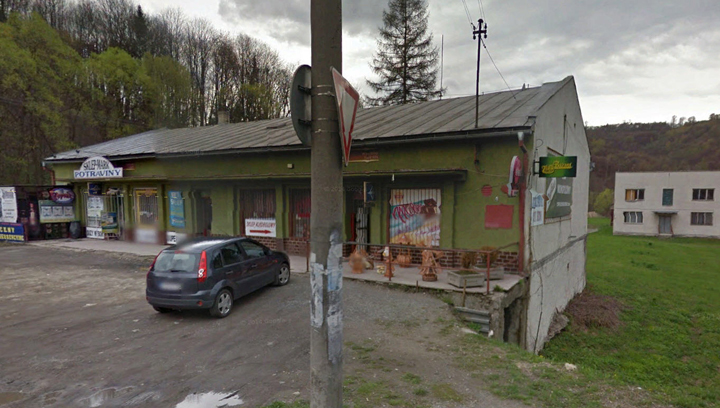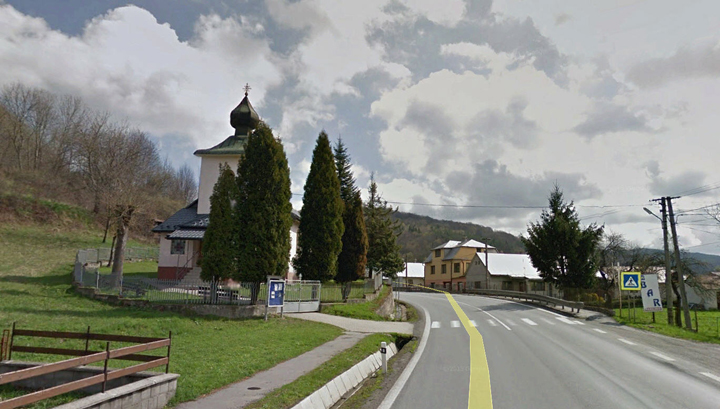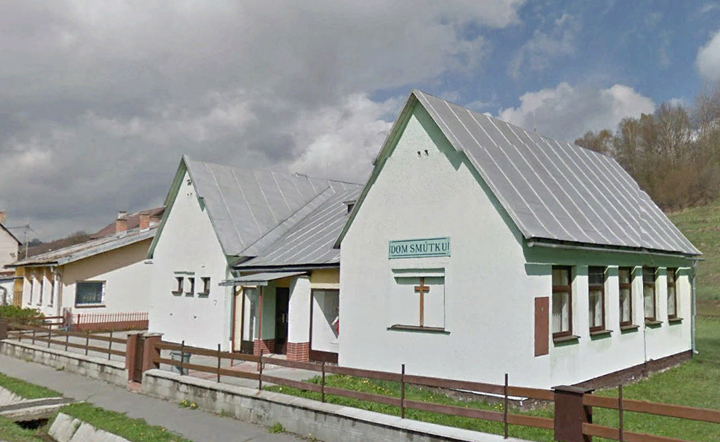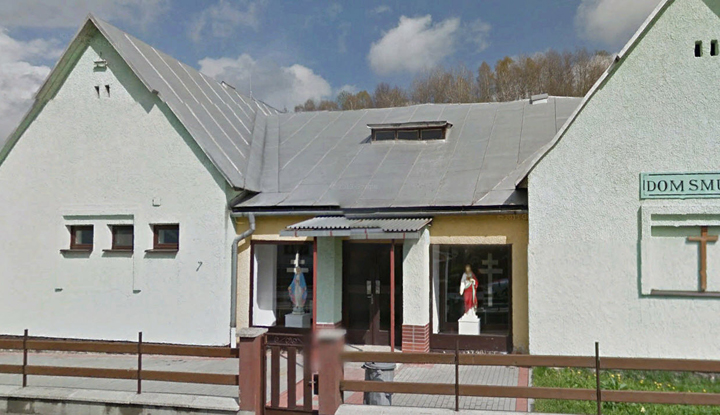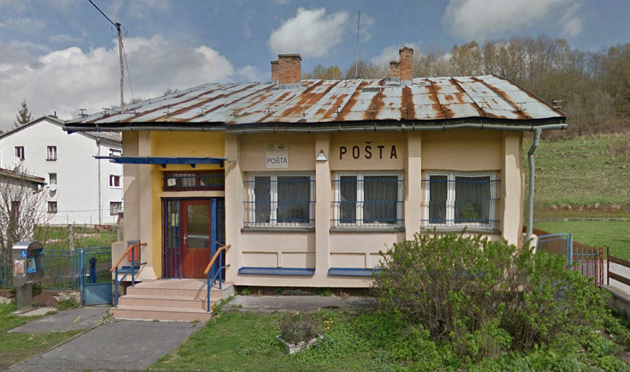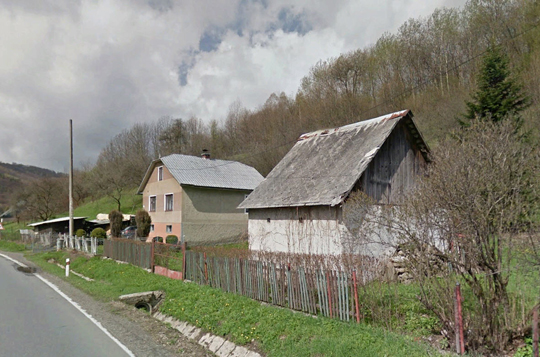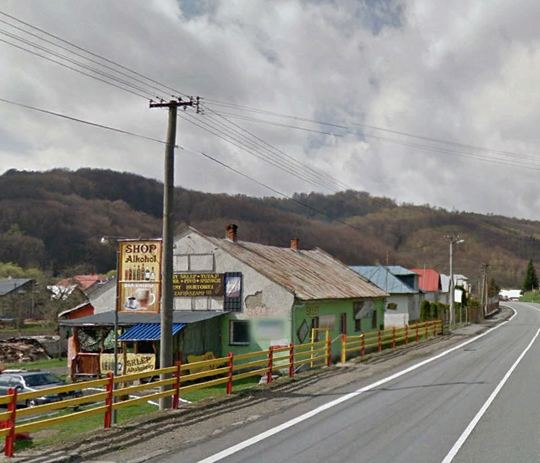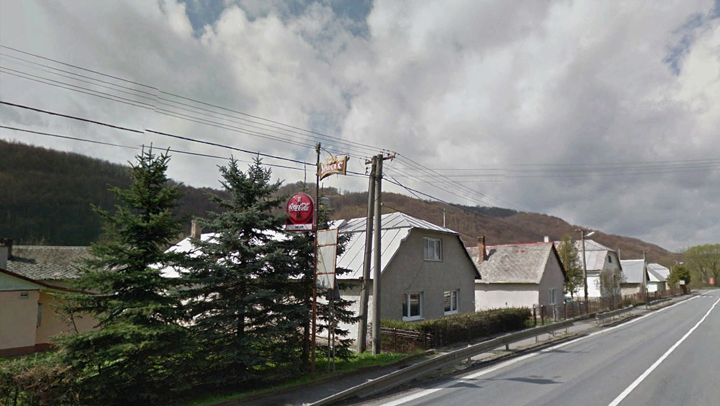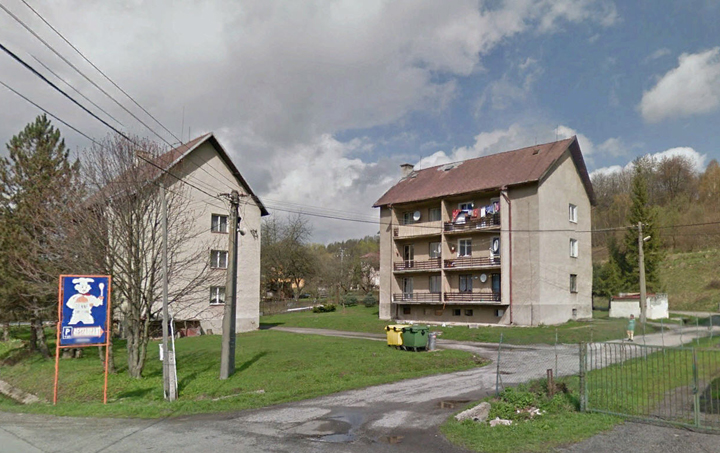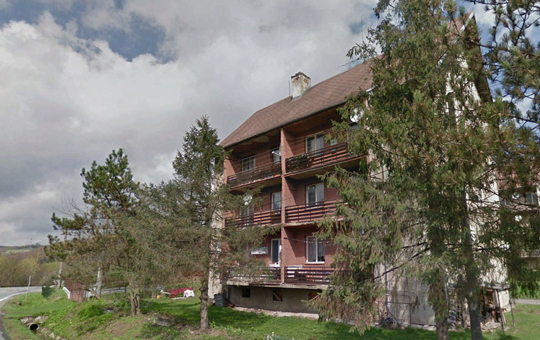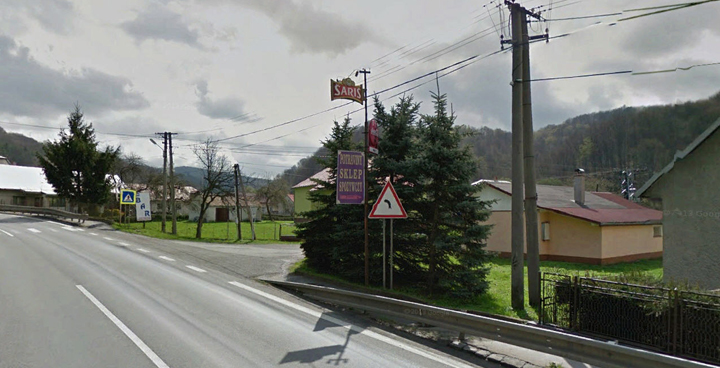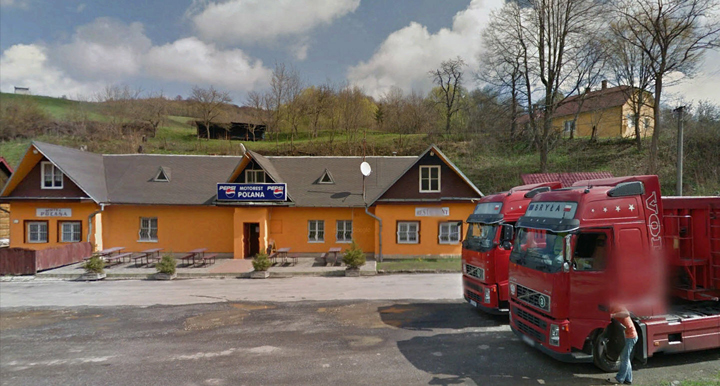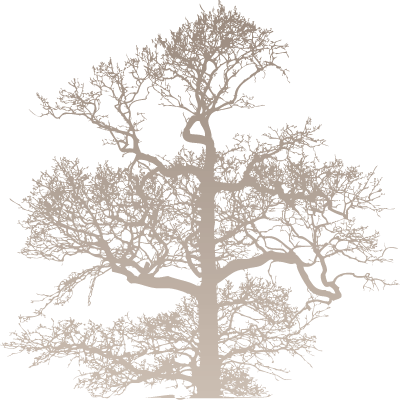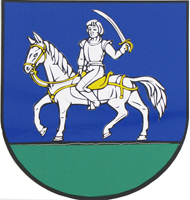
History:
Krajna Polana is located in the Svidnik region of present day Slovakia. It is first mentioned in documentation during 1618. The first name for the village “Hunkovska Polana” denotes a field named Hunkoviec on which it was constructed. Close to the present day Polish border, Krajna Polana was in close proximately to the Polish/Lemko villages of Barwinek and Tylawa. The residents were farmers and tended goats and sheep. There is also evidence of limited construction of agricultural tools and fabric manufacturing. In 1907 the Tonetovci family constructed a saw mill which in 1936 was converted to a steam driven saw mill. In 1929 the first teacher, Anton Kamanicky, arrived in the village to oversee the village school. During World War I the region saw many battles and there is a military cemetery with 23 graves. Those interred were from the Imperial Austro-Hungarian Army and the Russian Imperial Army. These soldiers were killed in close proximity to the village. The military cemetery is still maintained to this day. The village itself is approximately 2 miles in size and is located next to the dam on the Ladomirka River. Currently, the Mayor of the village is Jozef Fecilak and the village is split in half by a main trucking route. There are alcohol stores/taverns and empty buildings for rent. There is a main truck stop with a hotel (Motorest Polana) and another hotel (Zajacd Hotel) at each end of the village. The village has one small grocery store, what appears to be an abandoned post office and a "house of mourning" (funeral home).
Over time there have been varying names for the village:
1618 Polianka Krainai, 1773 Polana, 1786 Polyana, 1808 Polana, 1863 Krajnapolyana Krajnapolyanka, 1873-1882 and 1888-1902 Krajnopolyana, 1907 Ladomermezo, 1913 to 1920 Polana, 1927 to present Krajna Polana.
The population has been in steady decline in recent years:
1869-88, 1880-85, 1890-111, 1900-117, 1910-247, 1921-202, 1930-236, 1940-305, 1948-299, 1961-298, 1970-333. As of the last official governmental census, the village has approximately 200 residents.
Church:
The stone Greek Catholic Church of the Birth of the Virgin Mary was constructed in 1924. The exterior has a brown foundation/window boarders and the church itself is painted light brown. A two bar shrine crucifix is located in the rear property of the church. In centuries past, there was a wooden church which had a baroque altar. This altar was from the end of the 18th century and survived to the present day. The small interior of the church is simple and has no iconostasis. The church is painted white, yellow and blue and has a painting of God the Father above the altar. Stations of the Cross line each interior side of the church. In the rear is a beautiful portrait of Our Lady of Lourdes. The church has six rows of pews on the left and right hand side. Behind the altar to the left is a portrait of the Immaculate Heart of Mary and to the right is a portrait of the Sacred Heart of Jesus. Along with the Greek Catholic churches in Bodruzal (Saint Nicholas) and Mirola (Protection of the Virgin Mary), Krajna Polana was administered by the priest from the Greek Catholic Church in Hunkovce (Most Holy Virgin Mary.) To this day, the church has no resident priest. As of the most recent census, there were 154 Greek Catholics listed as parishioners.
The following photos provided by, The Greek Catholic Archbishop of Presov
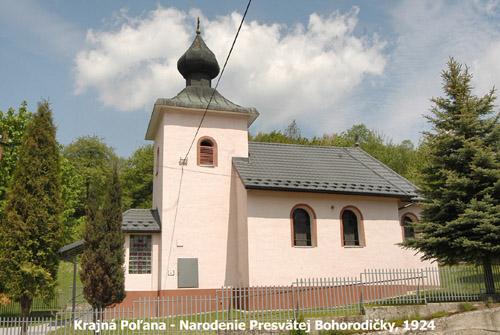
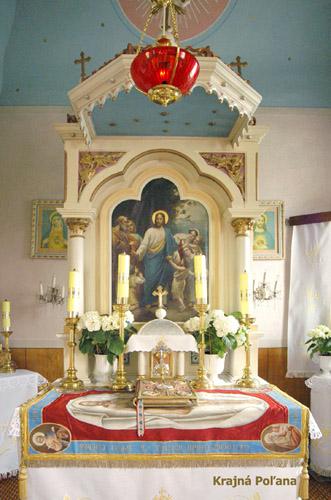
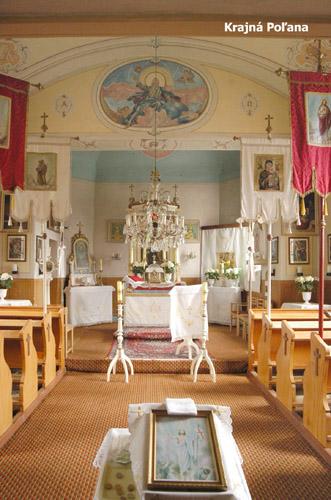
Surnames found in the village:
Adameckova, Babej, Berezsny, Brenisin, Brenisinova, Czaban, Cabanova, Cajnik, Csajnik, Cervenakova, Cservenyakova, Chocholak, Hoholyak, Ciskova, Conka, Csonka, Curilova, Drozd, Ducar, Duczar, Ducarova, Dvorsky, Dvorszky, Facak, Faczak, Facak, Fecilak. Fedak, Francak, Gerek, Goldir, Goriscak, Greslik, Grundza, Gula, Horvath, Hromoho, Ignac, Ignacz, Jevik, Kacurjak, Klesik, Laca, Lach, Malak, Mangera, Masica, Molnar, Nastisin, Nasztisin, Plavajk, Simko, Smolej, Sokol, Sopoliga, Staurovska, Stefanco, Steranka, Sturak, Tomko, Ukasik, Vanik, Vanko, Venglar, Volcko, Zemenik.
Google Earth Images
